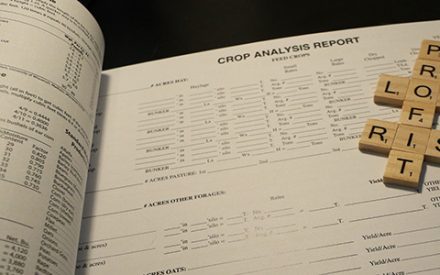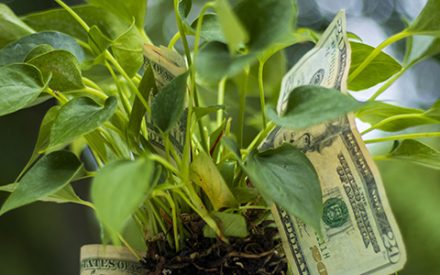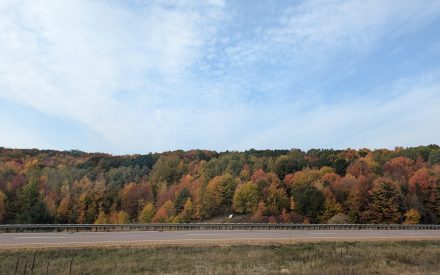Video Summary
In this video, Dr. Shawn Conley, UW–Madison Soybean and Small Grains Specialist, shares early-season decision cues for managing soybeans and winter wheat. He provides updates on crop development stages, discusses common issues like crusting, slug damage, and nodulation concerns, and emphasizes the importance of timely weed control.
Dr. Conley also addresses the risks of off-label herbicide applications in wheat and evaluates the economic and agronomic impacts of high-input soybean systems. He cautions against unnecessary inputs, highlighting research that shows they do not reduce risk and may contribute to herbicide resistance. The presentation encourages data-driven, threshold-based management for optimal returns.
Resources
Transcript
0:05
Awesome.
0:05
Thank you, Landon and thank you Josh.
0:08
I’m actually going to pose Josh a question in here.
0:10
If you could respond back to chat that would that would be great.
0:13
I’m sure others on the on the webinar might have a similar type of a question.
0:18
So today I want to spend a little bit of time talking about some of the early season decision queues, some things that are going on out there in the winter wheat and soybean world.
0:27
At least most of the chatter that I’ve been hearing either come in by e-mail or via texts or phone calls.
0:35
I want to give Landon a nice shout out for highlighting.
0:39
Our Badger Crop Network did a great job in the beginning talking about this.
0:43
But this is a new collaborative website that is a umbrella website for both myself, Damon Smith, Rodrigo Worley, and Harkirat Kaur, our corn agronomist.
0:56
In the past, we’ve all maintained separate websites, but this is a good opportunity for us now to combine all our efforts into one, one location where we can, you know, as a crop consultant, an agronomist, a farmer can all come to one location and find this information.
1:13
And as Landon had said, this automatically then feeds into the Wisconsin crop manager as well.
1:18
So there’ll be many opportunities for those on this webinar be able to find our information.
1:24
If you specifically want to be logged into or get an e-mail from Damon, he’s kind of been managing our listserv.
1:32
At the bottom of our web page, at the bottom of badgercropnetwork.com, there’s a place you can just sign in, list your e-mail address and you’re added to our our listserv.
1:43
So information will come up by that.
1:46
So what I want to do is just kind of give a brief update on winter wheat.
1:52
Most of the wheat across Wisconsin is somewhere in this flowering stage.
1:58
If you travel around southern Wisconsin, you would have noticed a lot of wheel tracks in the fields.
2:03
And as you move and approach up to northern, North Central, northern Wisconsin, we’re kind of in this Peaks 10.51 growth stage, which is flowering.
2:12
And I’ll turn it over to Damon later.
2:14
He’s going to talk about fungicide options and information related to that.
2:18
But just to remind people, it’s just kind of where we’re sitting at out there in in the winter wheat world, if you will.
2:25
The one thing I do want to remind people is, is at this time a growth stage, three of the four yield components for winter wheat are set.
2:33
Basically from this point moving forward, unless we have some type of significant freeze event, it’s going to be seed size is what we’re going to be looking at at this point or a drought event where we might have some loss in individual florets or flowers leading to, you know, just a reduced head count.
2:54
So beyond that, we’re just looking at seeds, seed fill as what’s really going to be driving our yields going forward.
3:01
This is always a picture I like to talk to farmers about is that I think what we’ll likely see if you’re a crop consultant, this is probably pretty common place for you is that we were kind of wet or cold in different areas and sometimes we got behind on the spray.
3:17
And if you were out there and you applied a, you know, a growth regulator herbicide after the label timing, you tend to see this symptomology.
3:29
And what this we see right here in this picture is the wheat on the right that looks to be, you know, wider cleaner if you will.
3:37
And you see the heads have that pretty tough tell tale hook to them shows the mature ready to go weed on the left.
3:45
You can see basically is sticking straight up and is and is dark.
3:49
And what had happened.
3:50
This is an off label application of dicamba leading to some significant causes of yield loss.
3:56
And this is just kind of a picture here of what that would look like in the Gray head.
4:00
So this is 1 weed head that we pulled out of the sprayer Skip and on the left and on the right hand side.
4:05
This is what a weed head would look like that when we had a late application of a of a growth regulator to control weeds.
4:12
So again, this is just a a point.
4:14
If you’re out there crop, you know, scouting fields and you drive by a wheat field that looks like it’s brown and nothing around that looks like that.
4:21
It probably what had what has happened is that that weed wheat died prematurely.
4:27
It’s a lot of secondary pathogens to move in that make that winter week, you know, dark in coloration and it’s going to be very dirty to harvest.
4:35
So just a couple of things to move forward in terms of once we get that wheat harvest, if we see that popping up in any fields around Wisconsin.
4:43
All right, I’ll kind of get into where we are physiologically with our soybeans.
4:48
As was pointed out earlier, we’ve been relatively cool across the state of Wisconsin, which is really like this winter, excuse me, the soybean crop is a little bit behind in terms of growth and development.
5:02
A lot of the times what we’re looking at, we’ve had some questions related to crusting issues depending on where your rainfall events were, also some slug type injury.
5:12
We’ve heard some reports across the state of Wisconsin in that as well as some hail and some storm damage where we’re seeing some significant rain events.
5:21
So one thing just to remind people, I’m sure you’re well aware of this, but at this VE growth stage this the main stem hypocotyl is very sensitive to the turgor pressure.
5:32
So if these get snapped off during that emergence pattern or if there’s any slug feeding or any injury that occurs below this cotyledon line, that means that plant is dead.
5:43
Unlike corn where that growth growing point doesn’t come out from the soil surface to about V5 with soybean crops, they basically are out of the ground as soon as they emerge.
5:55
But the other key point to remind people at this time frame is that if we lose this major, this growing point right here, we still have two cotyledonary axillary meristems at these two points.
6:09
That if this gets frosted out or if bird feeding or slug feeding, we can still get regrowth at each one of these axillary nodes.
6:19
So again, at this point, even if we lose this main growing point and we do have this axillary nodes take over, we see very minimal yield loss at this growth stage with that type of injury.
6:33
The VC growth stage is very kind of similar in that again, just as a friendly reminder, we could lose from this point up again for whatever reason, deer feeding storm damage.
6:45
And you can see probably better here, these axillary meristems occurring at these cotyledons.
6:51
Right now they’re, they’re basically being limited from growth by the axillary maristem.
6:56
But if we lose that, that, you know, the auxins from regulating these because that leaf tissue has been removed, we can get axillary growth at in each one of these, the V1 growth stage, this is where basically the fun, the fun begins, if you will.
7:13
We start transitioning into biological and fixation at this V1 growth stage.
7:20
This is where we can start to see the soybean root putting out these nod factors trying to encourage that biological and fixation with Ryzobia that are either been applied to that seed or are already endemically in the soil based on previous inoculant applications.
7:43
This V1 growth stage as we go back, is this typically the time where farmers get out and do a, you know, have to have the time to get out to start doing stand counts.
7:51
And a couple things to remind people is that first of all, soybean can take a pretty significant decline in population before we need to have any replant considerations.
8:04
Here’s some work, some older work that we’ve done, but in short to to kind of stay on time, our threshold for doing any type of replanting or any type of filling in is 50,000 plants per acre.
8:18
If you are above 50,000 plants per acre and those plants are uniformly distributed across the field, even if a farmer has a free replant, we really don’t see any economic value in a farmer doing that at this time of growing season.
8:37
Again, going back to looking on that’s left here some of our yield environment that we’ve kind of stressed into this information.
8:45
As you know, generally we recommend farmers buy a bag an acre which is 140,000 seeds per acre.
8:51
And here we can see in our yield environments that even if we’re at a little over 78,000 plants per acre emerged, we’re at about 99% yield potential.
9:04
And at 50,000 plants per acre emerge, we’re still at 95% yield potential for early planted soybeans.
9:12
So again, this just stresses the point that if we get our soybeans in, we get it implanted early.
9:18
They can survive a pretty significant amount of stand reduction.
9:24
Again, going back to they need to be early planted in relatively uniform and we don’t need to go in and mess around with any type of replants.
9:33
Interestingly enough, I’ve had a few farmers after the fact notice they had low pop plant populations and then they went back and looked at their seat tag and said, oh, we were at that 80% germ.
9:46
And this is something we’ve been kind of been reporting on for a while.
9:48
So if a farmers do realize they have thin stands and you haven’t done this before, just go back and read your seat tag.
9:55
And no, this was a, this was a problem that was brought forward by our dry harvest conditions last fall.
10:03
It appears that we are at this V2 growth stage, this is what we actually have that active N fixation going on.
10:09
And if we have kind of a close up of this roots of we can really look at this and it’s pretty simply if you go in and you split a nodule and you look for this pink coloration that shows that those nodules are actively fixing nitrogen.
10:26
If those nodules are in the white or green, they are not actively fixing nitrogen for that soybean plant.
10:35
And one of the things we’ve noticed and we we were shown what the soil temperatures were.
10:41
We see here, this was a text from a farmer in southern Wisconsin this last year where the soil temperature at 4 inches was basically 58°F.
10:52
And then there are some concern out there with the soybean being slow to slow to grow.
10:58
There also is some concern out there with nodulation.
11:02
And just as a reminder that abiotic, abiotic stresses such as low pH or droughty soils or cool wet soils can negatively impact nodulation.
11:14
And here we see that this Rhizobi infection rate is right at 64% when we have the soil temperatures at that 60° mark, and it’s significantly higher when we get warmer soil temperatures.
11:29
So again, the point I really want to make here is you’re out there, you’re scouting field, and you’re not seeing good nodulation.
11:35
Those beans may appear to be yellow.
11:40
There’s a good reason for that.
11:42
Cool soil temperatures and maybe they’re just not actually fixing nitrogen right now.
11:47
The other thing that may be leading this, and this was a question I was gonna pose if we, if we could talk about maybe this in the chat is what implications some of this wildfire smoke is having for our reduced amount of sunlight.
12:02
You know, for the soybean crop at this time of season and even for the corn crop.
12:06
Harkirat Kaur our corn agronomist wrote a nice blog article the other day that was posted on our new web page that it’s probably pretty minimal yield loss.
12:15
But just to know farmers are asking questions about that.
12:17
And that could be an implication of why our soil temperatures are where they are and growth has been slow to to occur the V3 growth stage.
12:27
I just bring this to everyone’s attention again, this is when we have 3 trifoliates that are open.
12:32
This is going back to and press upon you all just to remember the weed free.
12:36
The critical weed free period.
12:38
That if you haven’t controlled your weeds by this point, this is the time you we need to make sure we kill our weeds because at V3 going forward, we can start seeing some pretty significant yield losses out there based on this timing.
12:51
So again, just a friendly reminder to go out and especially when we get into this wet weather and make sure when we have these open windows, we can get those post emergence of herbicides applied in a timely manner.
13:03
The last thing I quickly want to remind people with about is this whole question about these intensive soybean management systems.
13:12
And what was really driving this home for me are a couple points #1 is that the depressed soybean grain prices, commodity prices out there, as well as the, you know, the amount of products available for, for farmers to put into their inputs.
13:28
And the big point we want to make here is that we’ve actually done some work with this.
13:33
We’ve looked at some low by low input systems.
13:36
I mean, you know, we basically controlled weeds.
13:38
We made sure our base fertilizer was done.
13:41
You know, everything was in a relatively good shape versus a high input system where we threw the kitchen sink at it.
13:48
What we really wanted to know is, you know, how do these high input systems affect farm risk?
13:56
So we’ve measured this in many different ways and I’m not going to get this get into a lot of it for you.
14:00
This is all on our web page and go and dig more into this if you want to.
14:04
The point we want to make here is yes, we can go in, we can apply inputs into these systems and generally we see a yield response to these higher input systems.
14:14
Now in a year like this year in 2025, their the likelihood of a return on investment for these kitchen sink or high input systems is pretty marginal to low in order to make sure you know, you know, get a return on investment for all those inputs.
14:30
But the other point I want to show here specifically in Wisconsin are these input systems that are are have been marketed or sold under insurance really do not minimize risk, which was counterintuitive and I was actually pretty surprised when we dug into this data.
14:47
So here’s in Wisconsin, we see here that these high input systems do not minimize the yield variance basically doing what you should be doing, scouting, applying inputs as prescribed or as necessary versus just throwing the kitchen sink in it.
15:03
We did not minimize the yield variation across a field, which was again a surprise to me, but it tells us something also, we didn’t really impact the skewness of of the inputs or the kurtosis or the cost of or the risk of cost or the cost of risk due to your return on investment or bottom line.
15:26
So in short, what I’m trying to say here and again, you could spend more time reading this article, is it just throwing inputs at a soybean crop does not minimize your risk and should not be thought of as insurance because our data clearly shows that it is not a form of insurance.
15:41
You do not minimize risk in in any three of these settings that we measured.
15:48
And lastly, the biggest other point we want to make is an article that myself, Damon Rodrigo, Jed Cahoon put together is keep your cocktails for a happy hour.
15:57
And understanding this whole idea that’s more-on principle and the more on principle is something that our our economist, Paul Mitchell has put together is this idea of cheap insurance.
16:08
And ultimately just by throwing inputs into the system, by not making applications based on need or pesticide thresholds have increased our risk of herbicide resistance, insect and disease resistance.
16:24
But also now this whole idea of metabolic resistance.
16:27
For those of you in the audience unfamiliar with metabolic resistance, basically in short, what this is, is by throwing a bunch of inputs at a system, we can induce resistance for a pesticide that we’ve never applied just by adding the stress to the system.
16:44
So that’s really an easy and oversimplified idea of what metabolic resistance is, but just be aware that we can be inducing resistance of a pesticide we’ve never even applied by just throwing the kitchen sink at it.
16:58
So in short, what I’m just trying to suggest to farmers, you know, go out, scout, apply pesticides judiciously, add a threshold and that would best basically best be your best return on investment in 2025 and going forward.
17:17
So with that, I want to make sure to, oh, I think I’m just out of time for Damon.
17:21
I told Damon I wouldn’t take all of his time.
17:23
So with that, I will pause and I’ll go into the questions and answer anything if there’s any questions for me.
17:31
Thank you.
Badger Crop Connect
Timely Crop Updates for Wisconsin
Second and fourth Thursdays 12:30 – 1:30 p.m.
Live via Zoom

 ▶ Fall 2025 Financial Assistance for Producers
▶ Fall 2025 Financial Assistance for Producers ▶ Fall 2025 Ag Policy Update
▶ Fall 2025 Ag Policy Update ▶ Fall 2025 Corn and Soybean Market Outlook
▶ Fall 2025 Corn and Soybean Market Outlook ▶ November 6 Ag Weather Outlook for Wisconsin
▶ November 6 Ag Weather Outlook for Wisconsin


